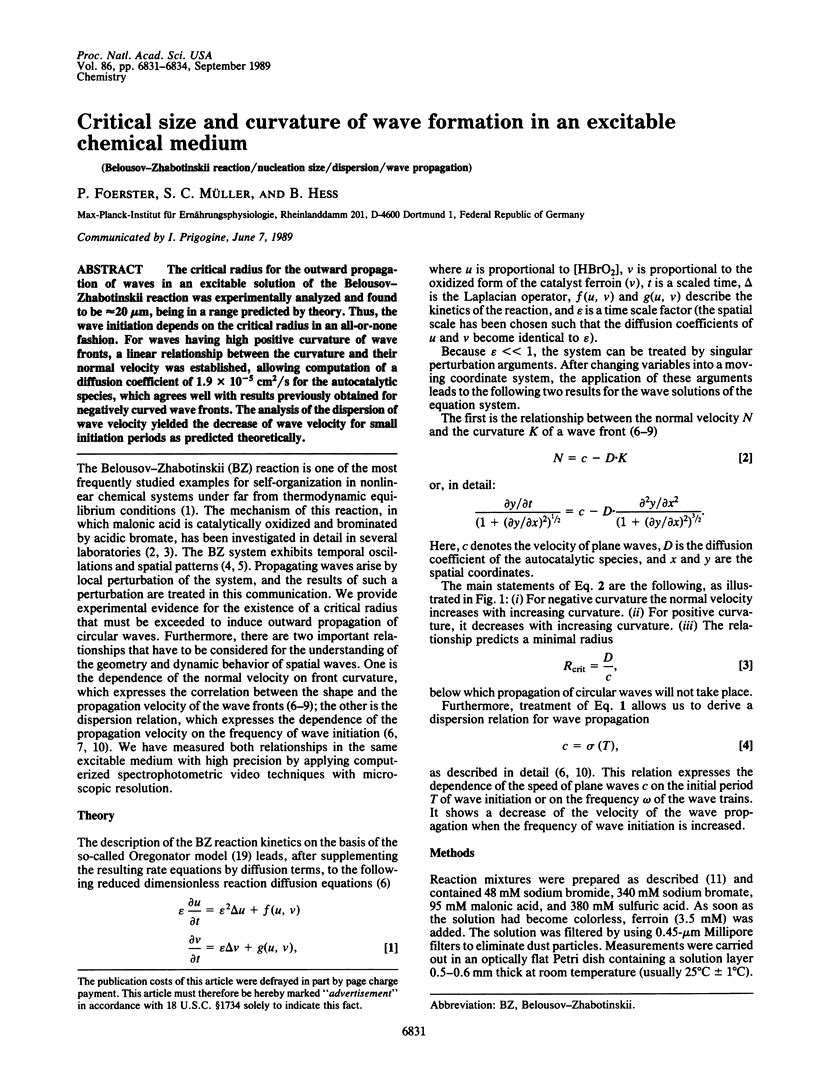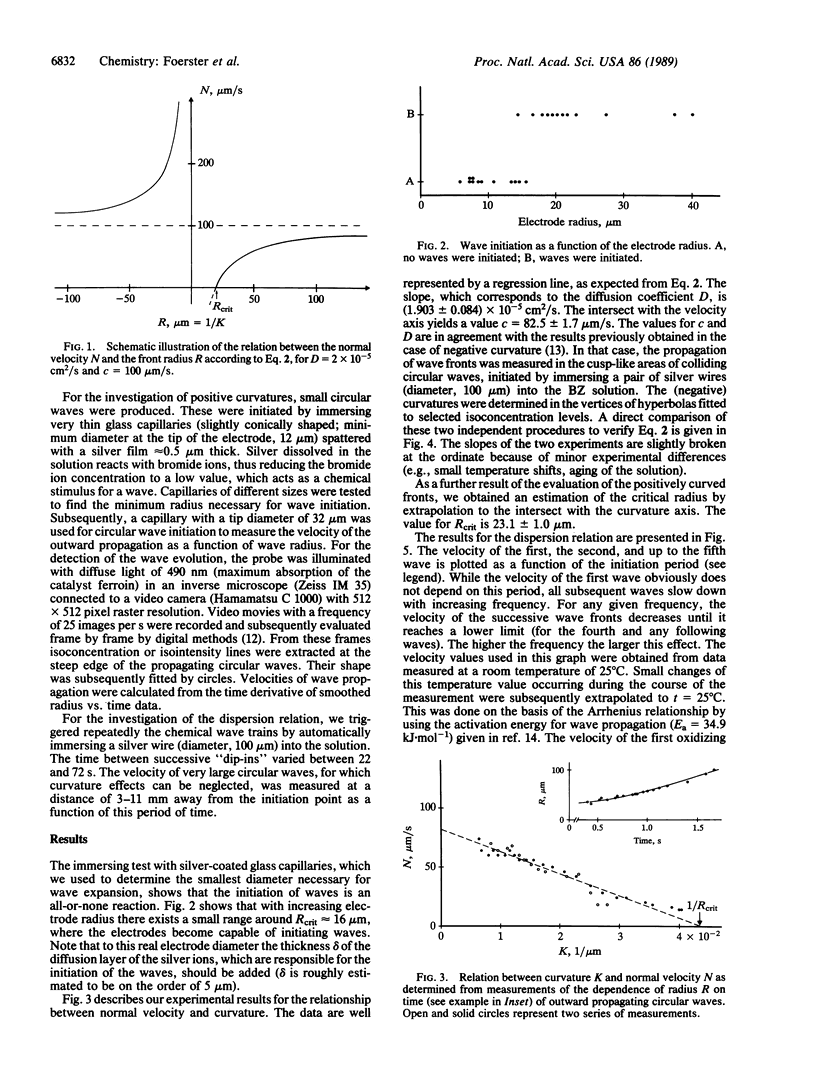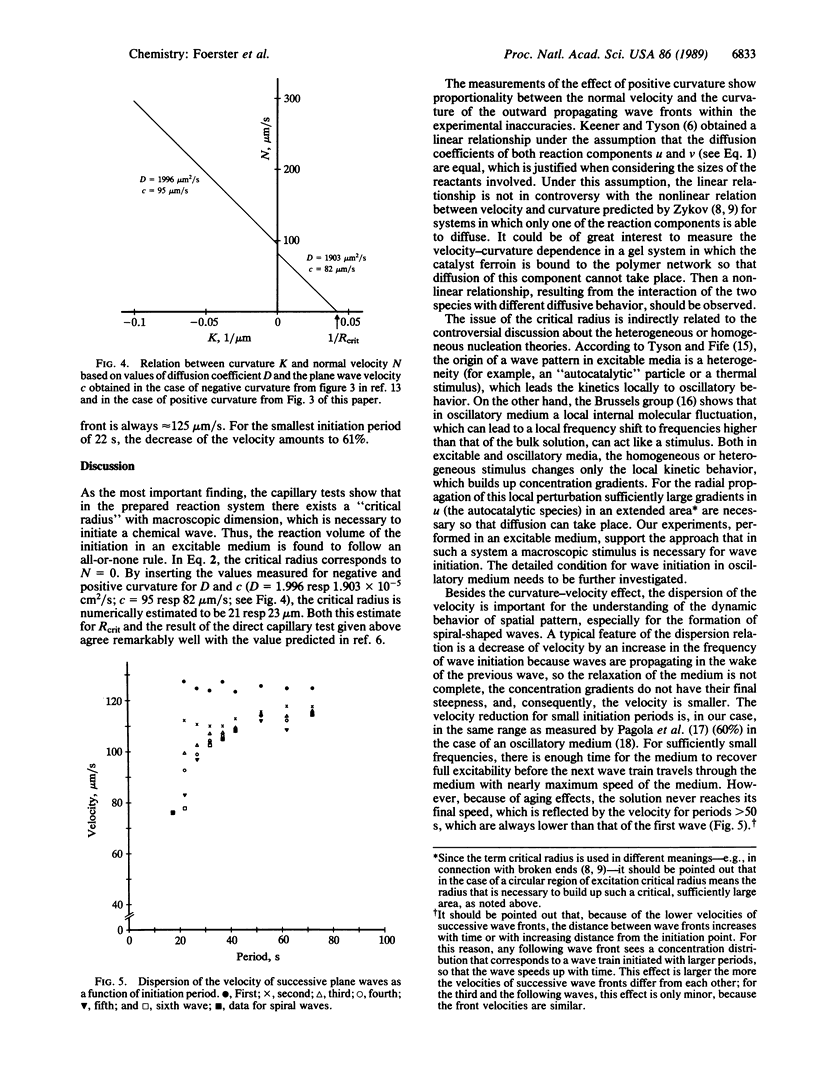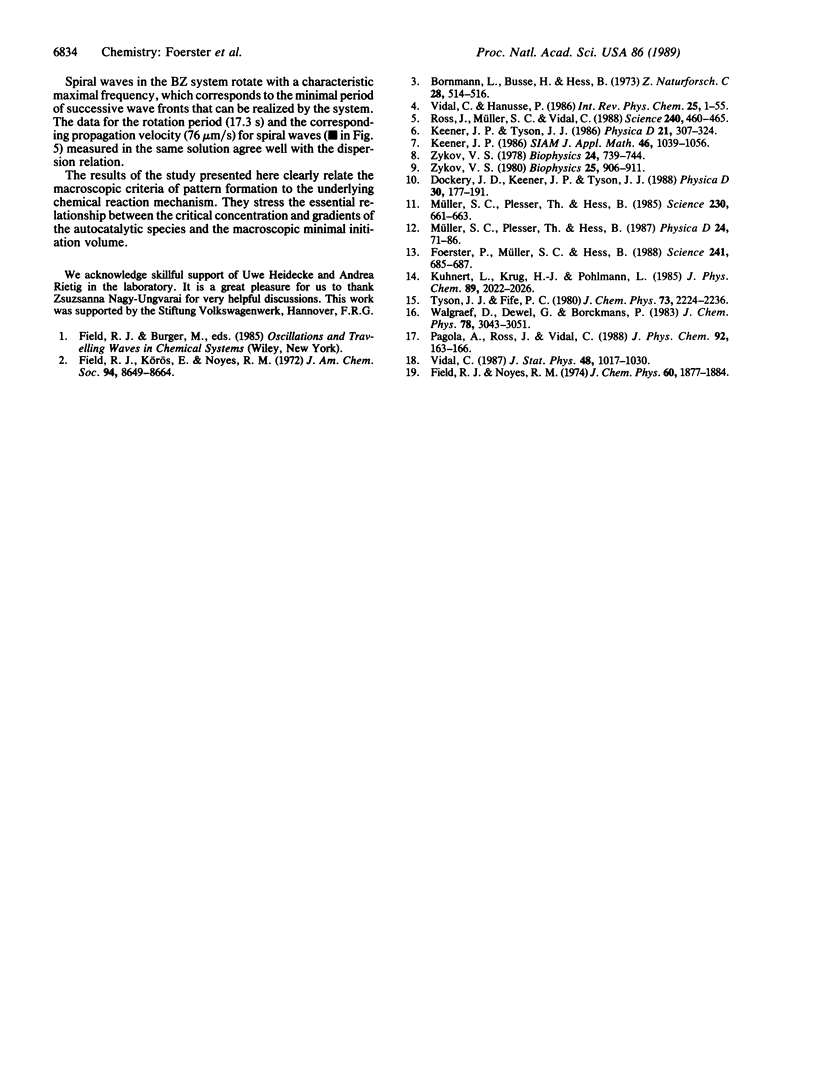Abstract
The critical radius for the outward propagation of waves in an excitable solution of the Belousov—Zhabotinskii reaction was experimentally analyzed and found to be ≈20 μm, being in a range predicted by theory. Thus, the wave initiation depends on the critical radius in an all-or-none fashion. For waves having high positive curvature of wave fronts, a linear relationship between the curvature and their normal velocity was established, allowing computation of a diffusion coefficient of 1.9 × 10-5 cm2/s for the autocatalytic species, which agrees well with results previously obtained for negatively curved wave fronts. The analysis of the dispersion of wave velocity yielded the decrease of wave velocity for small initiation periods as predicted theoretically.
Keywords: Belousov—Zhabotinskii reaction, nucleation size, dispersion, wave propagation
Full text
PDF



Selected References
These references are in PubMed. This may not be the complete list of references from this article.
- Foerster P., Müller S. C., Hess B. Curvature and propagation velocity of chemical waves. Science. 1988 Aug 5;241(4866):685–687. doi: 10.1126/science.241.4866.685. [DOI] [PubMed] [Google Scholar]
- Müller S. C., Plesser T., Hess B. The structure of the core of the spiral wave in the belousov-zhabotinskii reaction. Science. 1985 Nov 8;230(4726):661–663. doi: 10.1126/science.230.4726.661. [DOI] [PubMed] [Google Scholar]
- Ross J., Müller S. C., Vidal C. Chemical waves. Science. 1988 Apr 22;240(4851):460–465. doi: 10.1126/science.240.4851.460. [DOI] [PubMed] [Google Scholar]


